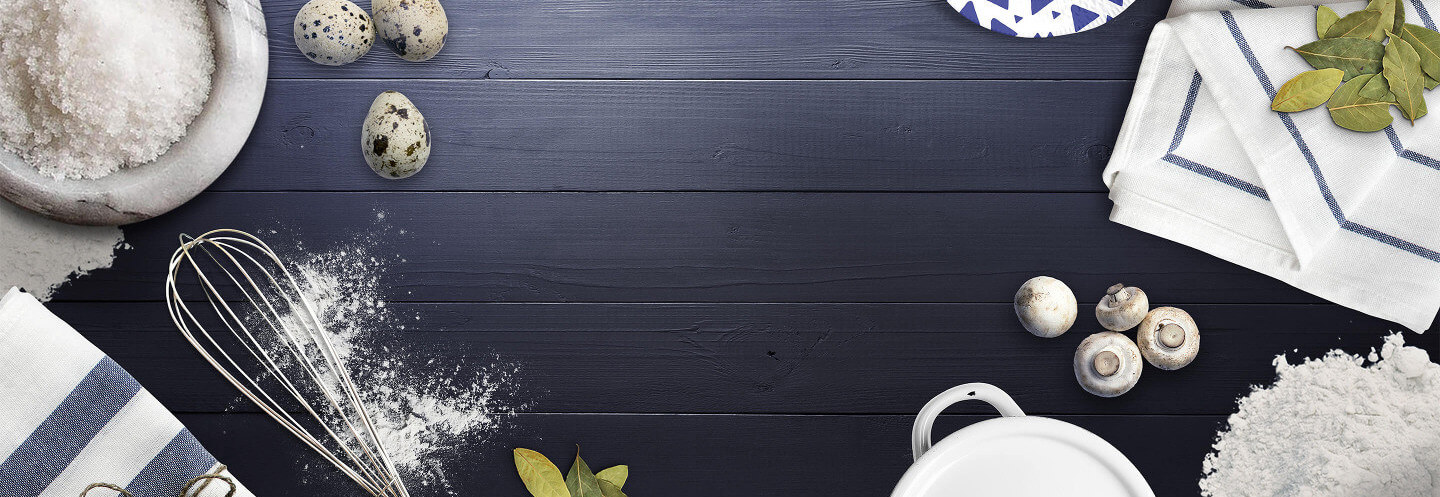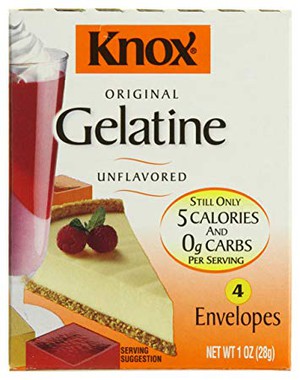https://www.copymethat.com/r/wyPXcHo8H/the-basics-knox-unflavoured-gelatin/
36616603
NV26807
wyPXcHo8H
2024-11-21 10:51:37
The Basics - Knox Unflavoured Gelatin
loading...
X
www.knoxgelatine.com › basics
Ingredients
- Knox Unflavoured Gelatin
Steps
- subheading: Instructions:
- subheading: Knox® Unflavoured Gelatine is simple and easy to work with. Depending on the nature of the recipe, you can choose one of four methods of dissolving the gelatine:
- subheading: In a Bowl: for most recipes.:
- subheading: Liquid Mix Method:
- 1. In mixing bowl, sprinkle 1 pouch Knox® Unflavoured Gelatine over ¼ cup (50mL) cold liquid. Let stand for 1 minute.
- 2. Add ¼ cup (50mL) boiling water, stir constantly until granules are completely dissolved.
- subheading: Sugar Mix Method:
- 1. In a mixing bowl, combine 1 pouch Knox® Unflavoured Gelatine with 2 tablespoons (25mL) of sugar.
- 2. Add ½ cup (125mL) boiling water; stir constantly until granules are completely dissolved.
- subheading: In a Saucepan: for recipes with ingredients that must be cooked or melted.:
- 1. In a saucepan, sprinkle 1 pouch Knox® Unflavoured Gelatine over ¼ cup (50mL) cold liquid. Let stand for 1 minute.
- 2. Place over low heat; stir constantly until granules are completely dissolved - about 3 minutes.
- subheading: In a Blender:
- 1. In a blender, sprinkle 1 pouch Knox® Unflavoured Gelatine over ¼ cup (50mL) cold liquid. Let stand for 1 minute.
- 2. Add ¼ cup (50 mL) boiling liquid and process until granules dissolve, about 30 seconds.
- subheading: In the Microwave:
- 1. In a glass measuring cup, sprinkle 1 pouch Knox® Unflavoured Gelatine over ¼ cup (50mL) cold liquid. Let stand for 1 minute.
- 2. Microwave on High (100%) for 30 to 40 seconds; stir once.
- Once the gelatine has been dissolved using any of these methods, remaining ingredients are added and the mixture is then poured into a mould or bowl and chilled until set.
- For best results when preparing a recipe, use all imperial or all metric measures - not a combination
- subheading: If Gelatine mixture becomes too firm:
- Knox® Unflavoured Gelatine is more resilient than you may think. If a recipe reads "chill mixture to consistency of unbeaten egg white" and it chills too firm, that's easy to fix. Place the saucepan over low heat and stir just until the mixture returns to a smooth-textured liquid state. Repeat the chilling process to the desired stage and the mixture will reset successfully
- subheading: Chilling Times:
- When the recipe says. Chilling Times Required*
- subheading: Test for Consistency:
- subheading: Uses:
- _Chill to consistency of unbeaten egg white. 20 to 45 minutes.
- Tip mixture off spoon. It should pour off slowly in partially thickened state.
- Combine with solids or whipped cream, to give an even distribution.
- _Chill until mixture mounds when dropped from a spoon. 20 to 45 minutes. Tip mixture off spoon. It should mound slightly. Combine with beaten egg whites, to give a fluffy even texture.
- subheading: _Chill until set (or firm):
- Most dishes take 3 hours; large dishes 4 to 6 hours or overnight.
- Tilt mould gently from side to side. The gelatine should hold its shape firmly.
- Unmould and serve.
- *Chilling times may vary with quantity of mixture, material of container and refrigerator temperature.
- subheading: Nutrition:
- Each envelope of Knox® Unflavoured Gelatine will gel 2 cups of liquid. ... Knox® Unflavoured Gelatine contains only 6 calories per serving (or 25 calories per envelope) and can easily be used to prepare "lower-in-calorie" recipes
- subheading: FREQUENTLY ASKED QUESTIONS:
- subheading: MY GELATINE LUMPS WHEN I TRY TO MIX IT WITH HOT WATER - WHAT AM I DOING WRONG?:
- Unflavoured gelatine granules must be separated before a hot liquid is added or you're guaranteed to have lumps. You can separate the granules by mixing the gelatine with either sugar or a cold liquid. Then add the hot liquid, stir and there will be no lumping!
- subheading: HOW DO I KNOW IF THE GELATINE IS DISSOLVED - AND WHAT'S THE BIG DEAL IF IT ISN'T ALL DISSOLVED?:
- subheading: Follow these easy steps:
- Use boiling water to dissolve gelatine in a bowl - temperature is important.
- Use a rubber spatula, and scrape the sides and bottom of the pan or bowl while stirring. Easy does it ... too vigorous stirring will splash the gelatine and leave it on the sides.
- It takes time as well as temperature to dissolve gelatine. So stir for at least two minutes (or longer if the recipe says so).
- You'll know the gelatine is completely dissolved when there are no visible granules remaining. Splash a little bit up against the side and check. No granules? You're ready to go on with the recipe.
- subheading: I'D LIKE TO MAKE A PRETTY GELATINE MOULD FOR A PARTY, BUT WHEN IT COMES TIME TO UNMOULD IT, I'M AFRAID I'LL BE QUIVERING MORE THAN MY MOULD. HELP?:
- subheading: For special occasions, nothing is quite as impressive as a shimmering mould. And it's really not that hard to unmould gelatine:
- Dip the mould into warm (not hot) water for about 5 seconds.
- Carefully loosen the mixture by running the tip of a sharp knife around the edges. Place the serving dish on top; flip over and holding firmly, shake gently until the gelatine slips from the mould onto the dish.
- If it doesn't come loose easily, simply repeat the process again.
- Some consumers find it easier to lightly oil the jelly mould before filling.
- But don't forget - you don't have to use a mould. Gelatine can be chilled in just about anything - bowls, dessert dishes, parfait glasses, baking or springform pans, graham cracker crusts, or even paper cups.
- subheading: HOW MANY TABLESPOONS ARE IN AN ENVELOPE?:
- 1 pouch is about 2 ½ teaspoons (7g) unflavoured gelatine. If a recipe calls for 1 tablespoon, use 1 pouch of unflavoured gelatine. Each pouch will gel 2 cups (500mL) of liquid and up to 1 ½ (375mL) cups of solids.
- subheading: I HAVE A RECIPE THAT CALLS FOR "SHEET GELATINE". HOW MANY POUCHES OF UNFLAVOURED GELATINE SHOULD I USE?:
- Sheets of leaf gelatine are not readily available in the United States or Canada, but it can be found in Europe. To use, these sheets are first softened in cold water for 1 to 2 minutes or until soft, then squeezed and then finally dissolved in hot liquid. One pouch of Knox® Unflavoured Gelatine has the same gelling strength as 5 sheets (2-7/8" x 8-½") leaf gelatine.
- subheading: I SOFTENED MY GELATINE ON COLD WATER, THEN ADDED IT TO THE REST OF THE INGREDIENTS. WHY DIDN'T IT GEL?:
- Many people confuse "softening" with "dissolving". Softening gelatine in cold water or another cold liquid helps the granules swell, which is the first step in dissolving. To actually dissolve the granules, boiling liquid or heating the cold liquid in which the gelatine is softened is needed, plus some stirring.
- subheading: CAN I USE MY MICROWAVE OVEN TO DISSOLVE GELATINE?:
- Yes. Gelatine can be dissolved easily in a microwave oven. Here's how: in a glass measuring cup, sprinkle 1 pouch unflavoured gelatine over ¼ cup cold water and let stand for 1 minute. Microwave on HIGH (100%) for 30 to 40 seconds; stir once.
- subheading: WHY CAN'T I USE SOME FRESH FRUITS WITH GELATINE?:
- Fresh figs, kiwi fruit, papaya, pineapple and prickly pears contain protease enzymes (enzymes which destroy protein). These enzymes have a softening effect on gelatine and prevent it from gelling properly. Boiling the peeled cut-up fruit for 5 minutes, however, will usually inactivate these enzymes, making all these fruits (except kiwi fruit) usable in gelatine recipes



